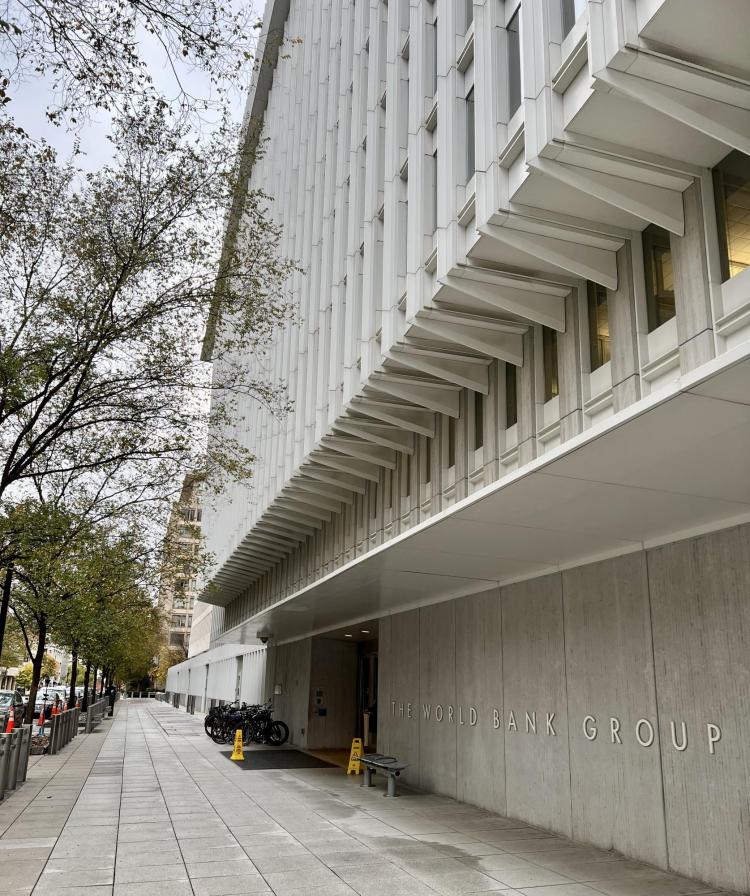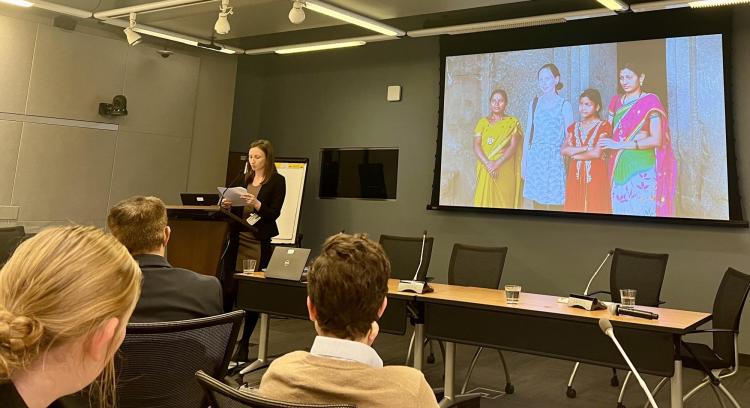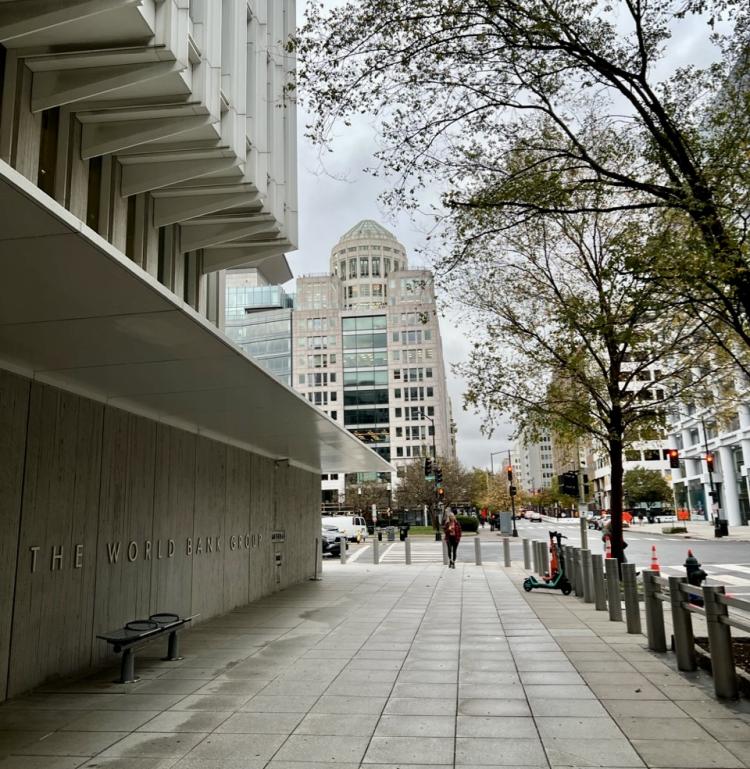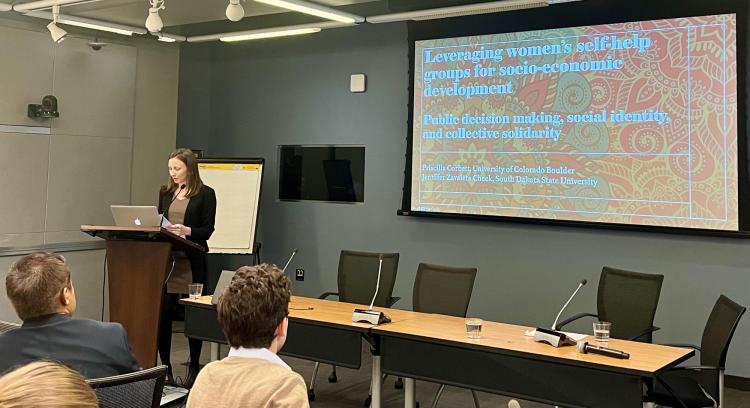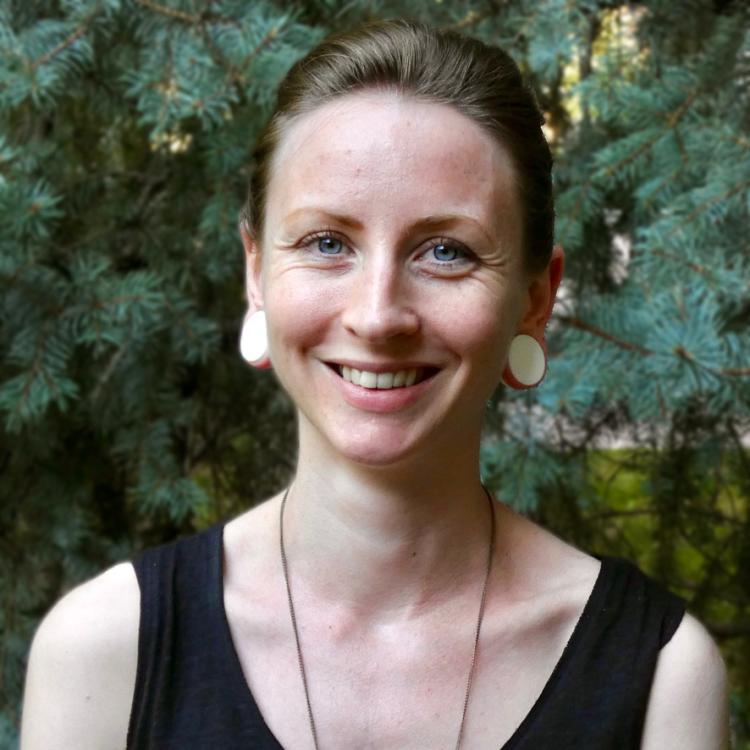 Geography PhD student Priscilla (Pris) Corbett presented work at the 2023 Annual Institute of the Society of Policy Scientists, held November 9-10 at the World Bank Headquarters in Washington D.C. Pris presented evidence of the potential of women’s self-help groups (SHGs) for women’s empowerment and poverty alleviation based on previous research in West Bengal, India. Many women-only SHGs have been established as the means through which to provide people otherwise considered uncreditworthy with access to formal financial services. However, Pris’ research focuses on the potential capacity of these groups beyond what microfinance can enable.
Geography PhD student Priscilla (Pris) Corbett presented work at the 2023 Annual Institute of the Society of Policy Scientists, held November 9-10 at the World Bank Headquarters in Washington D.C. Pris presented evidence of the potential of women’s self-help groups (SHGs) for women’s empowerment and poverty alleviation based on previous research in West Bengal, India. Many women-only SHGs have been established as the means through which to provide people otherwise considered uncreditworthy with access to formal financial services. However, Pris’ research focuses on the potential capacity of these groups beyond what microfinance can enable.
“A lot people still consider SHGs as only being about group savings and access to credit,” Pris said, “but our research shows the potential of these groups when members take ownership of the group and define their own priorities.” Pris presented evidence of two collectives of SHGs doing just that. In the first collective, strong leadership helped to produce a group identity and sense of solidarity through which all members begun to recognize themselves as integral parts of the group. Women leveraged the sense of trust and interdependence that this created to tackle an important community priority: lack of consistent grain supply year-round. Employing a skill that the women already had, they established a village grain bank, which helped eliminate dependence on moneylenders, reduce outmigration, and mitigate food insecurity. The success of the grain bank helped establish the SHGs as legitimate community institutions, which the women then leveraged to tackle alcohol consumption: a considerably more controversial goal that required behavioral change on the part of men. Women did this by recognizing the need for support and cooperation of other SHGs in surrounding villages. The SHGs did all of this without any external support.
In the second collective, SHGs worked together to create a mango orchard and then had their access to it revoked by the landlord when the trees began to bear fruit. Pris described the mechanisms that enabled the groups to fight for their access to the land and the impacts this in turn made for the solidification of group identity, solidarity, and unity. The second case study is important, however, because it demonstrates the structural barriers women are still liable to face, even when they are united, have a strong sense of solidarity, and have institutional support behind them. These women faced considerable opposition to their attempt to generate an income stream of their own, and a lot of that had to do with the challenge to established power asymmetries based on caste, class, and gender that this project effectively posed. Pris concluded her presentation by commenting on a number of ways in which SHGs could be better supported to enable such processes of change, while simultaneously outlining the limits to interventions and the dangers of over-expecting from them.
By presenting her research at the World Bank, Pris sought to expand understanding of the potential of the SHG among individuals in positions to effect change. “Development is full of faddism,” Pris said, “and my concern is now that everyone is disillusioned with microfinance and moving on to designing other poverty alleviation mechanisms, we forget or even reject SHGs in the process. There exists some 8 million SHGs in India alone – they are by far the most common form of women-only, village-level group here and possibly in other parts of the world as well. This for me represents a network with tremendous potential as to how we can reach women and support them to take active roles in decision-making processes regarding the issues of concern to them. While lots of NGOs focus their service delivery through SHGs, a lot of that remains rather top-down. We are not really creating opportunities for women to develop their problem solving, project management, and leadership skills, such that they are in a position to adopt positions of authority in their communities.”
Pris’ research shows that when SHGs work on self-identified projects for collective benefit, it can lead to changes in norms regarding women’s roles by shifting perceptions in women’s capabilities. While structural barriers continue to pose limits to project outcomes, women’s legitimacy as community decision makers can nonetheless be directly established when group members work together on a collectively-identified problem. The status of the SHG as a legitimate decision-making entity can then be leveraged into challenging the cultural norms and social structures that limit women.
